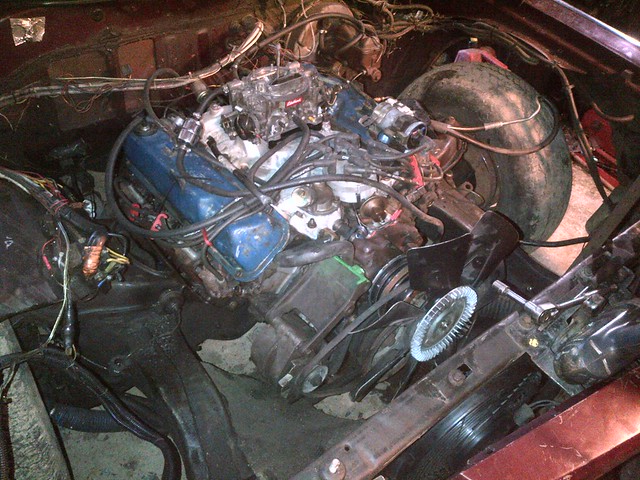In reply to curtis73:
As always, I appreciate your input and do not take it as snarky. I'm an engineer myself, so I tend to be relatively straightforward which can offend some people, but helps get straight to the point.
I do know about Ford's oiling issues on, well, everything. The cheap and dirty "fix" for the 460 is to install a high pressure and high volume pump, but that requires hardened/ beefed up oil pump drive components, which is a path we'd rather not go down, for now. As I've said, we have a super tall rear end so the engine never sees the bright side of 4K RPMs. We did install a windage tray and I have a mark on the dipstick indicating the bottom of the crank weights, so we know exactly where the oil level is. The engine maintains good oil pressure (my usual metric is at least 10 psi per 1000 RPMs) at all times, even under cornering.
To directly answer your questions about air cooling:
1) Both radiator hoses have internal springs. Both are relatively new.
2) With the upper radiator hose removed, the engine pumps water like nobody's business out of the hose, and it increases as RPM increases.
3) We have a water temperature gauge that fits into the stock location on the intake manifold, in the front of the engine, near the thermostat. We have not calibrated the gauge, but it is new-er.
4) Pullies are all stock, new belt, alternator charges good and fan spins well. Replaced the fan clutch, too.
5) We don't run coolant, only straight water, per LeMons rules. After this next race I'll probably drain and add 50/50 to it for storage issues. Also, I have been fluyshing and refilling the cooling system, and removing quite a bit of brown from it. I had been concerned about crud in the cooling system (the radiator is newer, and it's been flushed as well) so we're addressing that.
We have been running a 180 degree t-stat. I do not believe in running no thermostat. However, many guys seem to like running restrictor plates in place of the stat. So I drilled (4) 1/4" holes around the center of the t-stat. The engine gets up to about 185 when idling, then you can see the gauge go down to about 180 as the t-stat is apparently opening (this is another verification of the gauge being correct).
Now, I just did this t-stat drilling, we haven't raced on it like that yet. Likewise with the major block flushing. And the radiator sealing around the cowl, new head gaskets, relocating the tranny cooler, and about a dozen other things we've tried in a "buckshot" approach to better cooling.
Unfortunately, as I'd said, our capability to do testing (other than idling the engine and revving it in the driveway) is pretty limited due to it's non-road-legality. We have done some tuning with an A/F meter in the exhaust and richened up the carb (Edelbrock 1406) quite a bit. Throttle response seems excellent and the engine never wants for power. We don't have the vacuum advance connected- my understanding is that's mainly for part throttle cruising efficiency. Racing, we're either at WOT or idle, essentially. Ignition timing advances with RPM and seems to behave as it should (electronic ignition, no points).
I do plan on reviewing all the vacuum connections to ensure there's no leaks...there are a couple of plugs I want to check (not because they're suspect, I just haven't laid hands on them yet) and the vacuum line to the transmission (C6, auto).
One last thing- I thought the oil cooler was a parallel circuit, in that it would not impeded the flow of oil to the engine. If it is in series, however, then I agree with you- we absolutely should not touch that. I guess I need some clarification/ education about that.
Will move forward with the additional water cooling, but let's discuss the oil cooler some more.
Thanks (to everyone) for their input so far!













 I put a Monte Carlo heater core on my Acura K20A2 and completely eliminated my overheating issues. It adds about 25% more cooling, based on the results I have seen. A very easy modification and it only cost less than $100.
I put a Monte Carlo heater core on my Acura K20A2 and completely eliminated my overheating issues. It adds about 25% more cooling, based on the results I have seen. A very easy modification and it only cost less than $100.
















